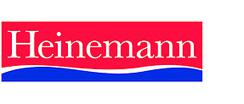- View more resources from this publisher
 Association for Science Education (ASE)
Association for Science Education (ASE)
Science in Society
A 1981 project which set out to bring non-specialist scientific literacy to the post-16 curriculum, Science in Society was one of the first high-profile UK science courses to include topics with wide political implications. A major influence on the choice and treatment of topics was the Club of Rome book (1972) called Limits to Growth. The report was based on modelling which explored how exponential growth interacts with finite resources. The main emphasis of the course was on the issues raised by the application of scientific knowledge but there was also a reader about the nature of science. The influence of the sponsors and expert contributors meant that there was an unusual emphasis on economics and the contributions of industry to the economy.
Resources
Filter
The Central Heating Project was a set of three related projects dealing with the theme of central heating each aiming to achieve the same educational aims but in different ways.
The project taught students about the technical and economic factors as well as interpretive and evaluative skills.
The...
The Power Station Project is a simulated case study from the Science in Society series dealing with the various decisions that have to be made when a new power station is being planned. It was designed as an integral part of the Energy section of the Science in Society course. It is assumed that an Electricity...
A 1981 project which set out to bring non-specialist scientific literacy to the post-16 curriculum, Science in Society was one of the first high-profile UK science courses to include topics with wide political implications. A major influence on the choice and treatment of topics was the Club of Rome book (1972)...
Science and Defence is a Science in Society reader with a series of essays discussing defence strategies with particular reference to nuclear weapons.
The book looks at why these weapons are 'a case apart' and the effects that they would have had on the wars that were raging at the time of writing in 1984....






